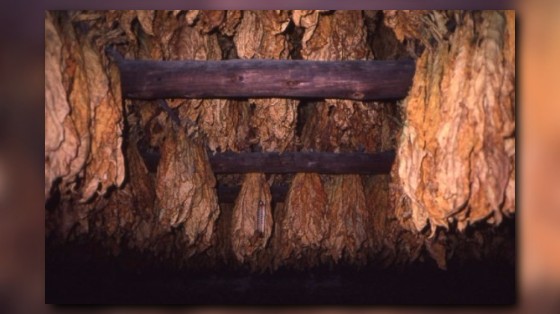On September 6, 1856, Abisha Slade of Caswell County spoke at an agricultural meeting about “the new process of curing yellow tobacco.”
The talk reflected an agricultural breakthrough that had been discovered by one of Slade’s slaves by mistake in 1839. The slave, named Stephen, worked as a blacksmith and oversaw the curing process of the tobacco crop on Slade’s farm.
One day, Stephen fell asleep in the tobacco curing barn, succumbing to the warmth of the curing shed’s fire. Waking up he found the fire almost completely out. He retrieved charred logs from his blacksmithing equipment and threw them on the fire, creating sudden, immense heat. The heat cured the tobacco quickly, leaving it with a vivid yellow color.
Stephen’s accidental discovery became what is known in the industry as flue-cured tobacco and to consumers as brightleaf tobacco. It was an instant hit with smokers.
By 1857, Slade was harvesting 20,000 pounds annually and making some of the highest profits ever. The sandy, relatively infertile soil of many North Carolina farms was ideal for growing tobacco for such a curing process.
The development of brightleaf tobacco was what ultimately led North Carolina to a dominant position in the tobacco industry.
Other related resources:
· Duke Homestead State Historic Site, which interprets our state’s tobacco heritage; this weekend the site will be hosting its annual Harvest and Hornworm Festival this weekend
· Articles related to tobacco from NCpedia
· The Celebrate Tobacco Barns project from the N.C. State Historic Preservation Office
· Images of tobacco and farming from the State Archives
For more about North Carolina’s history, arts, nature and culture, visit DNCR online. To receive these updates automatically each day, make sure you subscribe by email using the box on the right, and follow us on Facebook and Twitter.


